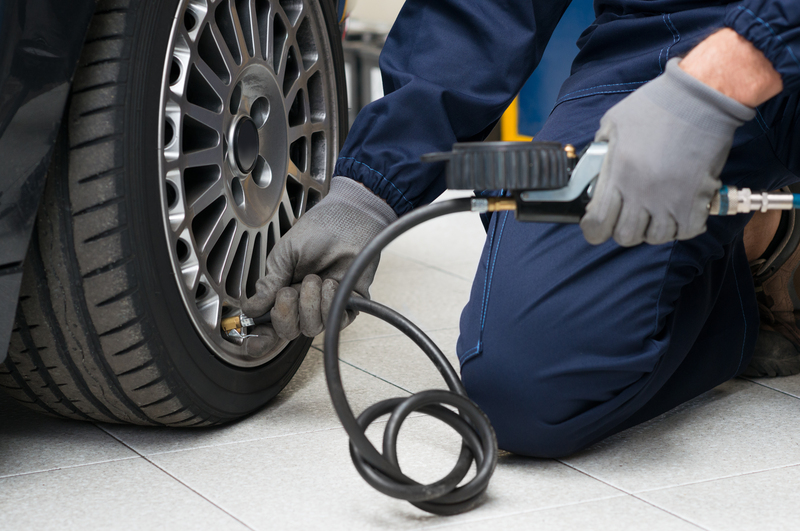Step-by-Step Guide to Moving Your Bed and Mattress
Posted on 31/05/2025
Step-by-Step Guide to Moving Your Bed and Mattress
Relocating to a new home is an exciting adventure, but it can also be stressful, especially when it comes to moving large and bulky items like your bed and mattress. These essential pieces of furniture require proper planning, packing, and techniques to ensure they arrive at your new destination in perfect condition. In this comprehensive guide, we'll walk you through how to move your bed and mattress step by step, offering expert tips and solutions for a smooth, damage-free move.
Why Is Properly Moving Your Bed and Mattress Important?
Your bed and mattress are crucial to a comfortable night's sleep. Improper moving can cause damage, wear, and even hygiene issues. Understanding the value of correct bed and mattress moving techniques can save you money on repairs or replacements and help you set up your new bedroom with ease.
- Prevents Damage: Proper packing and handling avoid tears, scratches, or frame breakage.
- Maintains Hygiene: Protecting your mattress from dirt, moisture, and bacteria is crucial for your health.
- Saves Time & Effort: Systematic planning ensures efficiency and less physical strain.
Common Moving Mistakes to Avoid
- Not measuring doorways or the new space
- Skipping mattress covers and protective wraps
- Moving beds assembled rather than in parts
- Attempting single-handed moves for heavy items
Let's begin a detailed, step-by-step process for moving beds and mattresses the right way.

Step 1: Prepare Your Bed and Mattress for Moving
Your initial preparation lays the groundwork for a hassle-free move. Here's how:
Gather Essential Supplies
- Mattress bag or plastic cover
- Furniture blankets or moving pads
- Bubble wrap and packing tape
- Tool kit (screwdrivers, Allen keys, pliers)
- Markers and resealable bags for hardware
- Straps or ropes
- Moving dolly or hand truck (for bigger beds or heavy frames)
Clear the Area
Clear around your bed to create enough space for easy movement. Remove nearby furniture, bedside tables, and rugs to prevent tripping or damage during the process.
Strip the Bedding
Remove all sheets, pillows, blankets, and mattress toppers. Wash and pack bedding separately in labeled moving bags or boxes.
Step 2: Disassemble the Bed Frame
Most beds are significantly easier to move when taken apart. Follow these steps for safe disassembly:
Read the Manufacturer's Instructions
If possible, locate your bed's assembly manual for specific guidance. Many brands also offer instructions online.
Remove the Mattress & Box Spring
- Carefully lift the mattress from the frame (always lift with your legs, not your back).
- Set the mattress and box spring aside for packing.
Disassemble in Logical Order
- Remove headboard, footboard, and side rails.
- For platform or slatted beds, take out support slats carefully.
- For adjustable beds, unplug motors and wrap cords separately.
Secure and Label Bed Hardware
As you remove nuts, bolts, or screws, immediately place them into a resealable bag. Use tape to attach the bag to the headboard or another bed part, or label clearly for easy reassembly.
Step 3: Protect and Pack the Mattress
Moving your mattress properly is essential to preserve cleanliness and structure. Here's what to do:
Use a Mattress Bag
- Slip your mattress into a fitted plastic mattress bag.
- Seal tightly with packing tape to prevent dust, moisture, and pests from entering.
Pro Tip: Mattress moving bags are available for all sizes (twin, queen, king) at most supply or hardware stores.
Wrap the Box Spring
Box springs are also susceptible to damage or dirt. Use a separate cover or blankets to wrap and secure with tape.
Step 4: Protect and Pack Bed Frame Components
After disassembly, each bed component needs protection to avoid scratches or dents during transport.
- Wrap headboard, footboard, and side rails in moving blankets or bubble wrap.
- Use tape or stretch wrap to secure coverings without sticking adhesive to finished wood or painted surfaces.
- For slats or metal parts, bundle and wrap together for easier handling.
Label each component with masking tape or labels for straightforward setup in your new home.
Step 5: Moving Day - Carrying and Loading
Enlist Help
Beds and mattresses are usually too heavy and awkward for solo moves. Ask friends, family, or hire professional movers for assistance.
Use Proper Lifting Techniques
- Bend at the knees, not the waist, and keep your back straight.
- Lift with your legs and hold items close to your body.
- Keep pathways clear to avoid tripping.
Moving the Mattress
- Mattresses flex, making them difficult to control. Move with at least two people for stability.
- Use straps or a mattress sling for better grip and support.
- Avoid dragging your mattress - this can tear the cover.
Moving Bed Frames
- Carry large items such as headboards upright to negotiate corners more easily.
- Use a dolly for heavy or bulky components, particularly for beds with storage drawers or adjustable bases.
Loading into the Moving Vehicle
- Place mattresses flat against the side wall of the truck to prevent sagging.
- Stack bed frame parts securely, using straps to anchor them and prevent shifting during transit.
- Do not stack heavy items on top of the mattress or box spring.
Step 6: Transportation Safety
Whether you're using a moving truck or transporting in a pickup, proper packing and securing is vital to avoid mid-journey damage or accidents.
- Ensure the mattress and bed frame are anchored securely with tie-downs or ropes.
- Check that nothing can slide or tip during sharp turns or sudden stops.
- If the weather is rainy or damp, check that all coverings are watertight and sealed.
Extra tip: Moving a mattress on the roof of a car is NOT recommended. It's unsafe and can damage both the mattress and vehicle (or even cause accidents).
Step 7: Unloading and Reassembling Your Bed and Mattress
You've arrived! Now it's time to rebuild your bedspace for that first night in your new place.
Unload Carefully
Reverse your loading procedures - slide and carry pieces, never drop them. Have a clear pathway to your new bedroom.
Unwrap and Inspect
- Remove all coverings and inspect each part for damage.
- Clean surfaces gently if needed.
Reassemble the Bed Frame
- Follow the manufacturer's instructions closely or reference photos taken during disassembly.
- Use the labeled hardware bags for quick assembly.
- Ensure all bolts and screws are tight for safety and stability.
Set Up the Mattress
- Remove the mattress cover and allow the mattress to "air out" before putting on bedding. This helps eliminate any moving-related odors or minor moisture build-up.
- Place the box spring or foundation as needed, then your mattress on top.
Tips for Moving Different Types of Beds and Mattresses
Moving Memory Foam or Hybrid Mattresses
- These mattresses are heavy and flexible. Always use two or more people for lifting.
- Bend gently but avoid folding tightly, which can damage internal structure.
Moving Adjustable Bed Bases
- Unplug all electrical components before disassembly.
- Draw diagrams or take photos of wiring for reference during reassembly.
Moving Platform Beds or Storage Beds
- Empty drawers and detach if possible.
- Disassemble platforms as much as feasible for easier transport.
Professional Bed and Mattress Moving Services
If moving your bed and mattress seems overwhelming, professional moving companies can handle the task. Benefits include:
- Specialized equipment to move and pack with care
- Insured transit in case of damage
- Faster, more efficient handling
Just make sure to check reviews, insurance options, and get a written estimate before hiring a moving company.

Frequently Asked Questions About Moving Beds and Mattresses
Can I move a mattress by myself?
It's not recommended for anything larger than a twin-sized mattress. Solo moves increase the risk of injury and mattress damage. Always ask for assistance.
How do I move a mattress up or down stairs?
Plan the route first, clear overhead obstacles, and move slowly with a helper on each end. If the stairs are too tight, consider alternative routes or a moving company.
Should I move my old mattress or buy a new one?
If your mattress is less than 7-8 years old and still comfortable, moving it makes sense. Otherwise, this can be a great opportunity to upgrade!
Is it safe to store a mattress upright?
Temporary storage upright is fine, but always transport and store mattresses flat to avoid deforming the shape over time.
Conclusion: Enjoy Your Good Night's Sleep After the Move!
Moving your bed and mattress does not have to be a challenge. With clear planning, the right supplies, and care at each stage, you can transport your bed and mattress safely and efficiently. Follow this step-by-step guide to moving your bed for peace of mind and a smooth start in your new home.
Remember: The effort you invest in moving your bedroom essentials carefully ensures you'll have a cozy place to rest--no matter where life takes you.
For more moving tips, resources, and checklists, browse our site and let us help make your next move stress-free and successful!



